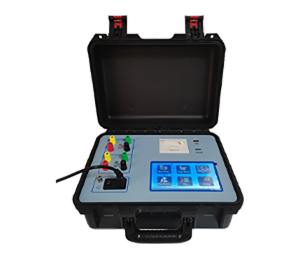 English
English



-
 Afrikaans
Afrikaans -
 Albanian
Albanian -
 Amharic
Amharic -
 Arabic
Arabic -
 Armenian
Armenian -
 Azerbaijani
Azerbaijani -
 Basque
Basque -
 Belarusian
Belarusian -
 Bengali
Bengali -
 Bosnian
Bosnian -
 Bulgarian
Bulgarian -
 Catalan
Catalan -
 Cebuano
Cebuano -
 China
China -
 China (Taiwan)
China (Taiwan) -
 Corsican
Corsican -
 Croatian
Croatian -
 Czech
Czech -
 Danish
Danish -
 Dutch
Dutch -
 English
English -
 Esperanto
Esperanto -
 Estonian
Estonian -
 Finnish
Finnish -
 French
French -
 Frisian
Frisian -
 Galician
Galician -
 Georgian
Georgian -
 German
German -
 Greek
Greek -
 Gujarati
Gujarati -
 Haitian Creole
Haitian Creole -
 hausa
hausa -
 hawaiian
hawaiian -
 Hebrew
Hebrew -
 Hindi
Hindi -
 Miao
Miao -
 Hungarian
Hungarian -
 Icelandic
Icelandic -
 igbo
igbo -
 Indonesian
Indonesian -
 irish
irish -
 Italian
Italian -
 Japanese
Japanese -
 Javanese
Javanese -
 Kannada
Kannada -
 kazakh
kazakh -
 Khmer
Khmer -
 Rwandese
Rwandese -
 Korean
Korean -
 Kurdish
Kurdish -
 Kyrgyz
Kyrgyz -
 Lao
Lao -
 Latin
Latin -
 Latvian
Latvian -
 Lithuanian
Lithuanian -
 Luxembourgish
Luxembourgish -
 Macedonian
Macedonian -
 Malgashi
Malgashi -
 Malay
Malay -
 Malayalam
Malayalam -
 Maltese
Maltese -
 Maori
Maori -
 Marathi
Marathi -
 Mongolian
Mongolian -
 Myanmar
Myanmar -
 Nepali
Nepali -
 Norwegian
Norwegian -
 Norwegian
Norwegian -
 Occitan
Occitan -
 Pashto
Pashto -
 Persian
Persian -
 Polish
Polish -
 Portuguese
Portuguese -
 Punjabi
Punjabi -
 Romanian
Romanian -
 Russian
Russian -
 Samoan
Samoan -
 Scottish Gaelic
Scottish Gaelic -
 Serbian
Serbian -
 Sesotho
Sesotho -
 Shona
Shona -
 Sindhi
Sindhi -
 Sinhala
Sinhala -
 Slovak
Slovak -
 Slovenian
Slovenian -
 Somali
Somali -
 Spanish
Spanish -
 Sundanese
Sundanese -
 Swahili
Swahili -
 Swedish
Swedish -
 Tagalog
Tagalog -
 Tajik
Tajik -
 Tamil
Tamil -
 Tatar
Tatar -
 Telugu
Telugu -
 Thai
Thai -
 Turkish
Turkish -
 Turkmen
Turkmen -
 Ukrainian
Ukrainian -
 Urdu
Urdu -
 Uighur
Uighur -
 Uzbek
Uzbek -
 Vietnamese
Vietnamese -
 Welsh
Welsh -
 Bantu
Bantu -
 Yiddish
Yiddish -
 Yoruba
Yoruba -
 Zulu
Zulu
Understanding Electrical Insulation Resistance Testing Methods and Best Practices for Safety and Performance
Electrical Insulation Resistance Testing Ensuring Safety and Reliability
Electrical insulation resistance testing is a pivotal procedure in the field of electrical engineering and maintenance. This testing method is crucial for ensuring that electrical systems operate safely and reliably. Insulation resistance refers to the ability of materials to resist the flow of electric current, which is essential for preventing short circuits, electrical shocks, and potential equipment failures.
The primary objective of insulation resistance testing is to measure the resistance offered by insulation materials against electrical current. A common tool used for this is the insulation resistance tester, also known as a megohmmeter. This device applies a high voltage to the insulation material, measuring the resistance in megohms. A high resistance value indicates that the insulation is intact and effective, while a low value may suggest deterioration, moisture ingress, or damage to the insulation material.
Electrical insulation resistance testing is critical in various applications, including power generation plants, industrial facilities, commercial buildings, and residential properties
. Regular testing procedures help identify issues before they escalate into serious problems, ultimately prolonging the life of electrical equipment and ensuring the safety of personnel.One key aspect of this testing is the adherence to standardized practices. The International Electrotechnical Commission (IEC) and the American National Standards Institute (ANSI) provide guidelines that help professionals conduct insulation resistance tests consistently and reliably. Following these standards ensures that tests are reproducible and comparable across different settings and times.
electrical insulation resistance testing

Typically, insulation resistance tests are conducted under specific conditions. It's essential to ensure that the equipment is powered off and that any capacitive or inductive loads connected to the circuit are discharged before testing. A variety of voltages may be applied depending on the equipment's insulation rating, commonly ranging from 250V to 5000V. The choice of voltage is crucial, as insufficient voltage may not reveal insulation problems, while excessively high voltage may cause damage to weaker insulation materials.
During an insulation resistance test, it is also a best practice to observe environmental conditions. Temperature and humidity can significantly impact the results. For instance, high humidity can lower the insulation resistance readings, while extreme temperatures can affect both the materials and the testing equipment. This is why it's advisable to perform tests under controlled conditions whenever possible.
Moreover, insulation resistance testing should not be seen as a one-time procedure. Regular testing intervals should be established based on operational conditions and the criticality of the systems. For instance, equipment in harsh environments may require more frequent testing compared to systems in controlled settings. A schedule that incorporates periodic testing can help maintain the reliability of electrical systems and mitigate unexpected downtimes.
Furthermore, documentation of insulation resistance testing results is crucial. This practice allows for tracking changes over time, identifying trends that could indicate degradation in insulation quality, and making informed decisions regarding maintenance or replacement of insulation materials.
In conclusion, electrical insulation resistance testing is a fundamental practice in ensuring the safety and efficiency of electrical systems. By adhering to industry standards, performing tests under appropriate conditions, and maintaining a regular testing schedule, organizations can safeguard their electrical infrastructures and protect both personnel and assets from electrical hazards. As technology continues to advance, embracing modern testing methods and equipment will further enhance the reliability of electrical installations.
-
Testing Equipment Industry Sees Major Advancements in 2025: Smart & Precision Technologies Lead the WayNewsJun.06,2025
-
Applications of Direct Current Generators in Renewable Energy SystemsNewsJun.05,2025
-
Hipot Tester Calibration and Accuracy GuidelinesNewsJun.05,2025
-
Digital Circuit Breaker Analyzer Features and BenefitsNewsJun.05,2025
-
Benefits of Real-Time Power Quality Monitoring Devices for Industrial EfficiencyNewsJun.05,2025
-
Earth Fault Loop Testing in High-Rise Building Electrical SystemsNewsJun.05,2025



